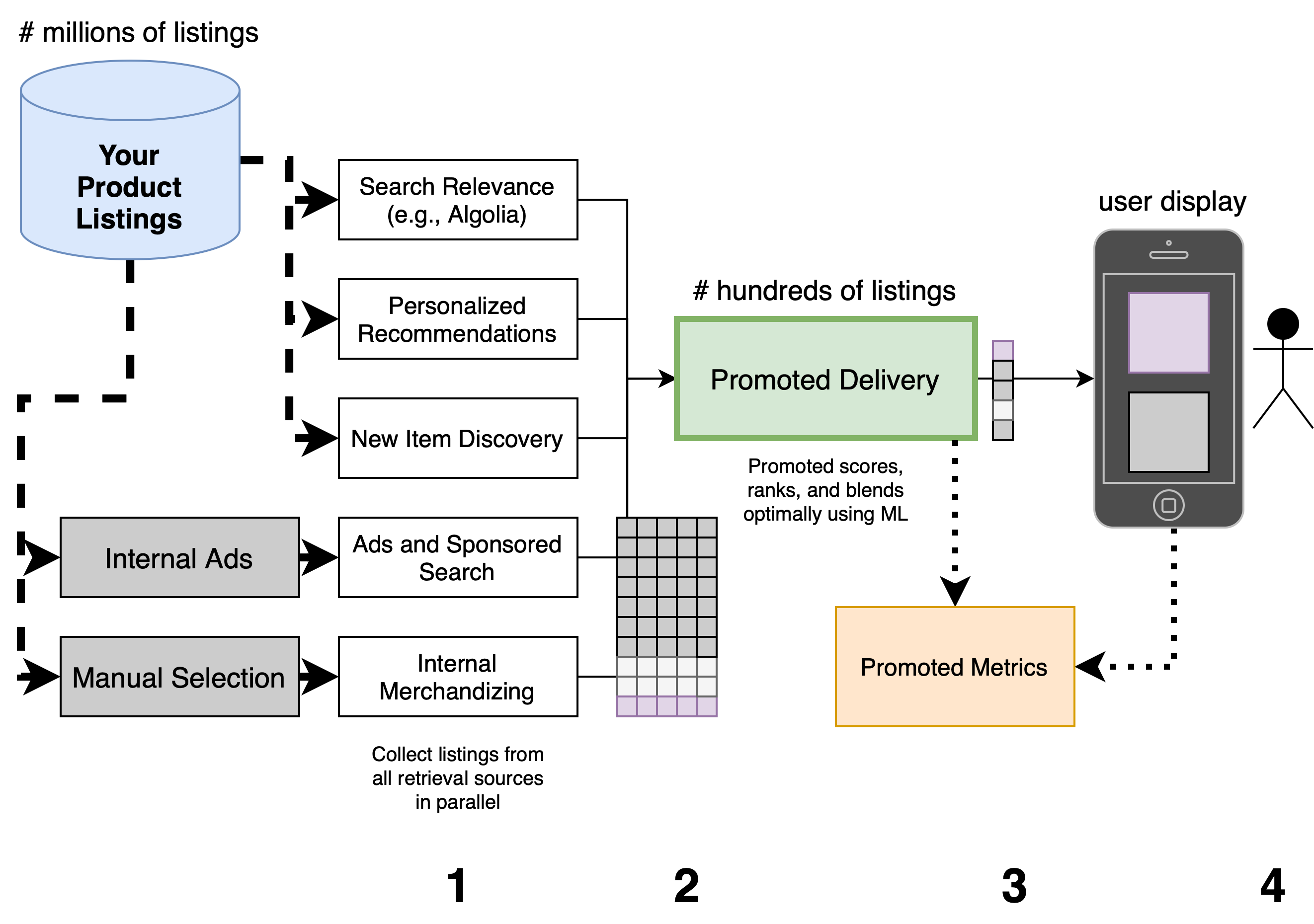Installing Promoted on Top of Other Search Systems
Promoted's optimizations are always incremental and reuse existing investments in search, recommendations, and ads
Promoted specializes in winning an extra 5-9% revenue when your scaled online marketplace, e-commerce app, or social media network has already maxed out industry-standard solutions like Algolia, Elastic, and AWS Personalize. Gains from Promoted always incremental and extend existing search, discovery, recommendations, and ads targeting systems (together, “retrieval systems”). Promoted is designed to work with and extend all existing retrieval systems, including all vendors and any in-house system, including (but not limited to):
| Function | Vendor Examples |
|---|---|
| Search | Algolia, Bloomreach, Constructor, Elastic, Pinecone, Apache Solr, OpenSearch |
| Recommendations | AWS Personalize, Google Cloud Recommender |
| Databases | Redshift, Postgres, MongoDB, MySQL |
| Ad Servers | Kevel, Citrus Ads, Google Ads Manager |
Use of Promoted requires the selection of one or more retrieval systems. Most Promoted customers already have at least one in-house system or vendor for search, feed, recommendations, and ad targeting. Promoted extends, not necessarily replaces, your existing systems, dramatically lowering integration risk and eliminating business logic migration costs. If you do not already have a search, retrieval, or targeting system, then Promoted can provide consulting or engineering services to host or help you self-host a retrieval system from one of our retrieval system partners.
Flow of content
Promoted uses a multi-stage retrieval architecture, similar to large search engines and social media companies. Promoted specializes in the last stages: ranking, blending, and ad allocation, if needed. See How Promoted Works and the Promoted Integration Walkthrough for in-depth examples of how Promoted ranks your content.
Retrieval services, like Algolia, filter and sort content prior to Promoted's ranking. Promoted is the last step, optimizing your ranking before displaying the results to the user.

Process of ranking and displaying results for a user's search query with Promoted.
Working with other ranking and personalization systems
Promoted extends in-house or vendor system providing personalization, recommendations, ranking, or allocation services to optimize results and improve metrics capturing and analysis. The limits to placing Promoted on top of other systems are end-to-end user latency (how long it takes for results to be shown to users), system maintenance complexity, and infrastructure hosting costs.
Real-time system stacking: At many large marketplaces and e-commerce apps, separate teams or vendors own systems like search, ads, personalized recommendations, new item exploration, and internal promotions. With Promoted, these systems would be combined and balanced into a unified presentation to the user.
Real-time signal passing and model stacking: In addition to stacking systems, you can stack other recommendation, quality, and optimization models by sending these scores and ranks to Promoted. Promoted builds on top of these systems by automatically including all ranks and scores passed on the Delivery API in its own models. This way, Promoted performs at least as well — and almost always better — as your best optimization system. Existing systems complement Promoted, not compete with it.
Asynchronous Signal Loading Promoted's User and Item Content Management Systems (CMS) are cost-efficient and easy to integrate, and faster than passing this data in real-time during delivery. Engagement data and signals are loaded into the Promoted CMS from database update hooks, batch jobs, recurring data analytics pipelines, and in-house CMS systems. All of these signals are available to Promoted delivery for optimization and later for analytics and reporting in our Metrics product. See our explainer video on sending additional data via the CMS.
System Replacement: In some cases, Promoted reproduces other personalization or quality systems or renders these existing systems unnecessary as compared to using Promoted alone. In this situation, you may discontinue other personalization, recommendation, and ranking systems to save infrastructure and engineering costs, lower end-user latencies, and unify your system.
Updated 6 months ago